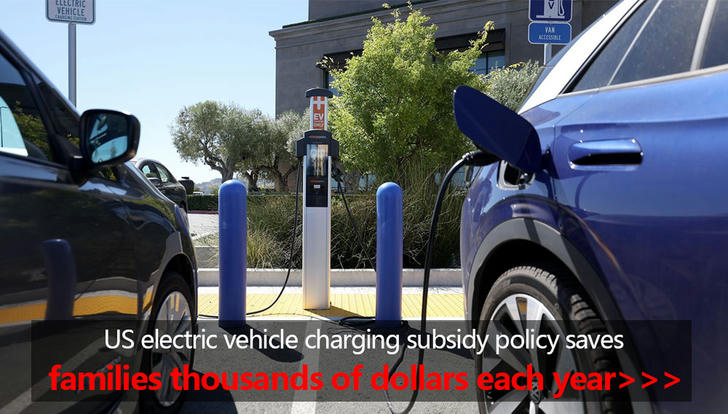How to Save on Electric Vehicle Charging Costs: A Comprehensive Guide to State Incentives and User Experiences 🚗⚡
Electric vehicle (EV) incentives offer significant financial benefits, helping drivers save hundreds or even thousands of dollars annually on purchase and charging costs. Taking advantage of these programs can reduce the overall cost of EV ownership substantially, making clean transportation more accessible and affordable. 💸✨

1. State Incentive Programs and Potential Savings 💰
Across the country, various states provide a range of incentives aimed at lowering the cost of owning and charging electric vehicles. These incentives include tax credits, rebates on vehicle purchases, charging station installation subsidies, and utility company programs. Below is a summary of some of the most impactful state-level incentives and their estimated savings for EV owners in 2025:
| State | Incentive Type | Potential Savings (USD) | Notes |
|---|---|---|---|
| California | Clean Vehicle Rebate Project (CVRP) | Up to $7,500 | Income-based rebates; additional utility rebates available |
| New York | Drive Clean Rebate & Charge Ready NY | Up to $6,000 | $2,000 vehicle rebate + $4,000 charging port subsidy |
| Colorado | State Tax Credit & Utility Rebates | Up to $8,000 | $4,000 tax credit + up to 50% charging station cost coverage |
| New Jersey | Sales Tax Exemption & Charging Rebate | Up to $5,133 | Sales tax exemption + $4,000 point-of-sale rebate + charging rebates |
| Oregon | Clean Vehicle Rebate & Charging Rebate | Up to $10,000 | $2,500 rebate + charging infrastructure incentives |
| Texas | Vehicle Purchase Rebate & Utility Rebates | Up to $3,700 | $2,500 rebate + utility rebates for home charging |
These incentives can stack with federal tax credits, which offer up to $7,500 on qualifying EV purchases, further increasing savings. Combining state and federal benefits can mean thousands saved on both vehicle acquisition and charging infrastructure. 🔋💵
2. How to Apply for These Incentives 📝
Applying for EV incentives typically involves several steps:
Research Eligibility: Check state-specific requirements such as income limits, vehicle type, and residency status.
Purchase Qualified EV: Buy or lease an eligible electric vehicle from a participating dealer or private seller.
Submit Application: Complete the rebate or tax credit application through official state portals or utility websites.
Provide Documentation: Upload necessary documents such as purchase agreements, proof of residency, and vehicle registration.
Install Charging Equipment (if applicable): For charging station rebates, installation receipts and photos may be required.
Receive Rebate or Credit: After approval, funds are typically issued as a check, direct deposit, or tax credit.
3. Real User Stories: Saving with EV Incentives 🚘🌟
Case 1: Sarah from California
Sarah recently purchased a new electric vehicle and applied for the Clean Vehicle Rebate Project. She qualified for the full $7,500 rebate due to her income level and combined it with a $1,000 utility rebate for installing a home charging station. Over the first year, Sarah saved nearly $9,000, which helped offset the upfront costs significantly. She also enjoys using the carpool lanes, saving time during her daily commute. 🚙💨
Case 2: Michael from New York
Michael took advantage of the Drive Clean Rebate, receiving $2,000 back on his EV purchase. Additionally, he installed a Level 2 charger at home with support from the Charge Ready NY program, which covered $3,500 of the installation cost. These incentives reduced his total ownership cost by over $5,000 in the first year, making EV ownership financially attractive. Michael appreciates the reduced fuel and maintenance expenses as well. ⚡🏠
4. Impact of Incentive Programs: Adoption and Savings 📊
The adoption of EV incentives has grown steadily, with millions benefiting nationwide. Below is an overview of the current usage and estimated savings:
| Metric | Number/Amount | Description |
|---|---|---|
| EV Owners Utilizing Incentives | Over 2 million | Nationwide count of incentive users |
| Average Annual Savings per Household | $1,500 - $3,000 | Savings from combined incentives and reduced fuel costs |
| Total Incentive Funds Distributed | $4 billion+ | Cumulative state and utility rebates distributed |
| Estimated Reduction in Charging Costs | 20% - 40% | Based on utility and infrastructure subsidies |
These figures demonstrate how incentives effectively lower barriers to EV adoption and ongoing charging expenses, contributing to cleaner transportation and energy savings. 🌍🔌
5. Frequently Asked Questions (FAQ) ❓
Q1: Can multiple incentives be combined?
A: Yes, many states allow stacking state incentives with federal tax credits and utility rebates, maximizing savings.
Q2: Are incentives available for used electric vehicles?
A: Some states offer rebates for used EV purchases, but eligibility varies; checking specific program details is recommended.
Q3: How long does the application process take?
A: Processing times vary but usually range from a few weeks to a couple of months depending on the program and documentation completeness.
Q4: Are charging station installation costs covered?
A: Many programs subsidize a significant portion of home or workplace charging station installation costs, reducing upfront expenses.
Q5: What if my income exceeds program limits?
A: Some rebates have income caps; however, other incentives like utility rebates or tax credits may still be accessible.
Conclusion: Unlocking Savings with EV Incentives 🚀
The combination of federal and state incentives creates a powerful financial advantage for electric vehicle owners, helping reduce both purchase and charging costs. By understanding and utilizing these programs, drivers can save thousands annually while contributing to environmental sustainability. As adoption grows, these incentives continue to evolve, making EV ownership increasingly accessible and cost-effective. 🌟🔋
